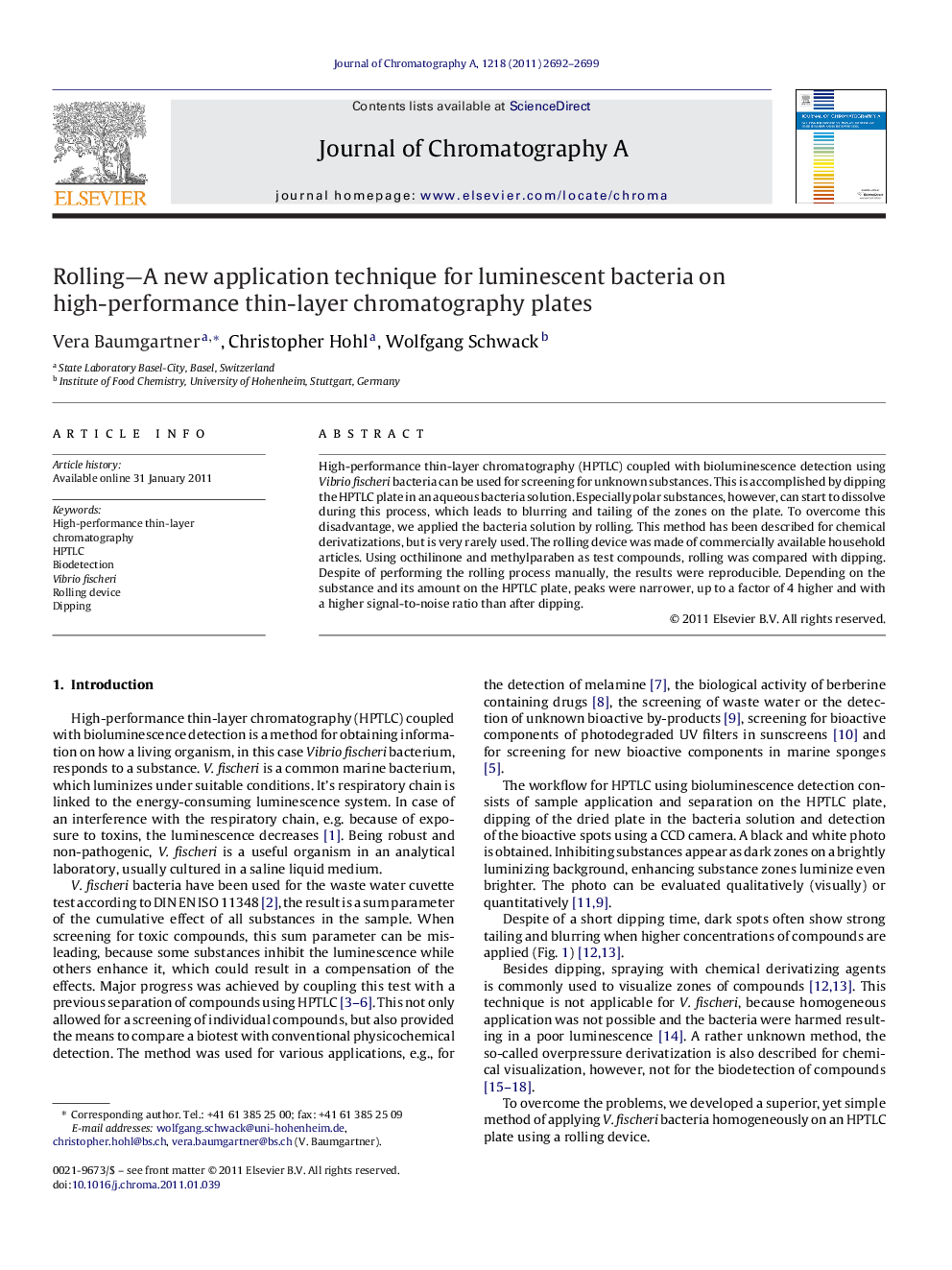| Article ID | Journal | Published Year | Pages | File Type |
|---|---|---|---|---|
| 1202955 | Journal of Chromatography A | 2011 | 8 Pages |
High-performance thin-layer chromatography (HPTLC) coupled with bioluminescence detection using Vibrio fischeri bacteria can be used for screening for unknown substances. This is accomplished by dipping the HPTLC plate in an aqueous bacteria solution. Especially polar substances, however, can start to dissolve during this process, which leads to blurring and tailing of the zones on the plate. To overcome this disadvantage, we applied the bacteria solution by rolling. This method has been described for chemical derivatizations, but is very rarely used. The rolling device was made of commercially available household articles. Using octhilinone and methylparaben as test compounds, rolling was compared with dipping. Despite of performing the rolling process manually, the results were reproducible. Depending on the substance and its amount on the HPTLC plate, peaks were narrower, up to a factor of 4 higher and with a higher signal-to-noise ratio than after dipping.
